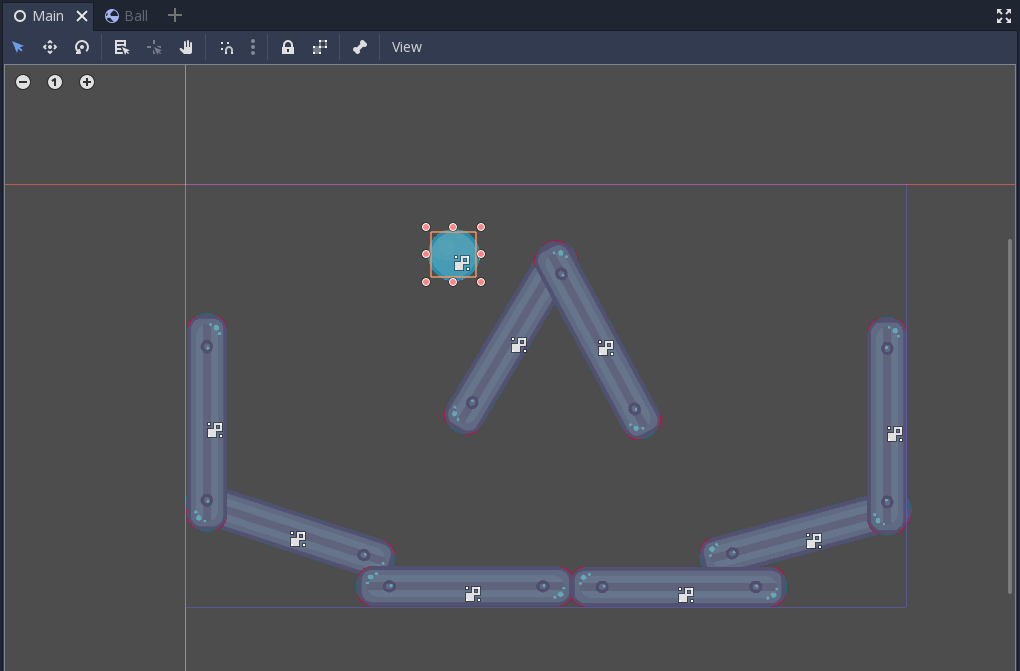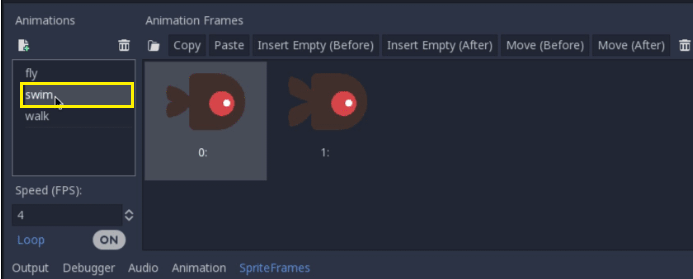


If the engine detects a collision anywhere along this vector, the body will immediately stop moving. Typically, this is your velocity vector multiplied by the frame timestep ( delta). This method takes one parameter: a Vector2 indicating the body’s relative movement. Note: Kinematic body movement should only be done in the _physics_process() callback. After a KinematicBody2D has collided, any collision response must be coded manually. These methods move the body along a given vector and will instantly stop if a collision is detected with another body. Instead, you use the move_and_collide() or move_and_slide() methods. When moving a KinematicBody2D, you should not set its position directly. The physics engine will not move a KinematicBody2D. Note: A KinematicBody2D can be affected by gravity and other forces, but you must calculate the movement in code.
GODOT RIGIDBODY2D CODE
While this means that you have to write some code to create their behavior, it also means you have more precise control over how they move and react. They detect collisions with other bodies when moving, but are not affected by engine physics properties like gravity or friction. KinematicBody2D is for implementing bodies that are to be controlled via code. However, Enemy and Coin nodes would not detect each other, because they only scan layers they are not in. In this scenario, the Player node would detect collisions with both Enemy and Coin nodes (because they are in layers it scans). You have three nodes with the following configuration: In “Project Settings”, look for the “Layer Names -> 2D Physics” section:Ī body’s layer properties can be configured via code, or directly in the Inspector: If an object isn’t in one of the mask layers, the body will ignore it. By default, all bodies are on layer 1.ĭescribes what layers the body will scan for collisions. Let’s look at each of the properties in turn:ĭescribes the layers that the object appears in. Each collision object has 32 different physics layers it can interact with. This system allows you to build up very complex interactions between a variety of objects. One of the most powerful but frequently misunderstood collision features in Godot is the collision layer system. When changing the size of the collision shape, you should always use the shape’s handles. The Scale property in the Inspector should remain at (1, 1). Note: Be careful to never scale your collision shapes in the editor. These nodes allow you to draw the shape directly in the editor workspace. The most common way to assign a shape is by adding a CollisionShape2D or CollisionPolygon2D as a child of the object. Note: In order to detect collisions, at least one Shape2D must be assigned to the object. These shapes are used to define the object’s collision bounds and to detect contact with other objects. Collision shapesĪ physics body can hold any number of CollisionShape2D objects as children. All movement must be implemented in code. See Godot 3.0: Rigid Bodies for more information.Ī body that provides collision detection, but no physics. You do not control a rigid body directly, but instead you apply forces to it (gravity, impulses, etc.) and the physics engine calculates the resulting movement. This is the node that implements simulated 2D physics. This type of body is most often used for objects that are part of the environment or that do not need to have any dynamic behavior. It participates in collision detection, but does not move in response to the collision. Godot offers three kinds of physics bodies, grouped under the PhysicsBody2D type:Ī static body is one that is not moved by the physics engine. When a collision is detected, you typically want something to happen. In game development you often need to know when two objects in the game space intersect or come into contact. In this tutorial, we’ll look at the KinematicBody2D node and show some examples of how it can be used. You can avoid problems and simplify development if you understand how each each works and what their pros and cons are. Trying to decide which one to use for your project can be confusing. Godot offers a number of collision objects to provide both collision detection and response.


 0 kommentar(er)
0 kommentar(er)
